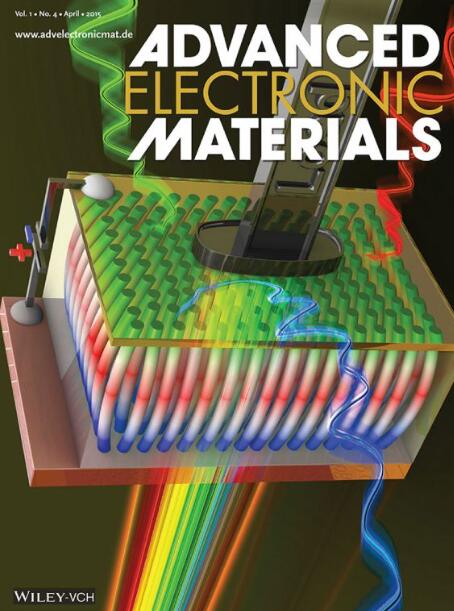Extremely High Electron Mobility in GeSn Epitaxial Films by Chemical Vapor Deposition
IF 5.3
2区 材料科学
Q2 MATERIALS SCIENCE, MULTIDISCIPLINARY
引用次数: 0
Abstract
Direct‐bandgap germanium‐tin (GeSn) has attracted much interest for high‐performance optoelectronic and electronic device applications. However, the transition from indirect bandgap to direct bandgap in GeSn epitaxial films and the effects on the electron transport properties are not fully understood. In this work, the electron populations and transport properties are investigated in high‐quality n‐GeSn films epitaxially grown using chemical vapor deposition under different strain conditions. Hall measurements are performed to characterize the effective density and mobility in the n‐GeSn films at temperatures from 300 to 4 K. Very high electron mobilities up to 6,200 and 1,500 cm

化学气相沉积在GeSn外延膜中的极高电子迁移率
直接带隙锗锡(GeSn)在高性能光电和电子器件应用中引起了人们的广泛关注。然而,GeSn外延薄膜从间接带隙到直接带隙的转变及其对电子输运性质的影响尚不完全清楚。本文研究了化学气相沉积法在不同应变条件下外延生长的高质量n - GeSn薄膜的电子居群和输运性质。在300 ~ 4k的温度范围内,进行了霍尔测量来表征n - GeSn薄膜的有效密度和迁移率。在50 K和300 K下,应变弛豫的Ge0.88Sn0.12薄膜的电子迁移率分别达到了6,200和1,500 cm2V−1s−1,这是由于直接Γ‐谷中的电子居数增加。利用经验赝势法(EPM)模拟了n - GeSn薄膜的能带结构,计算了其电子密度。模拟结果支持实验数据,并强烈表明在GeSn薄膜上施加更大的拉应力或增加应变松弛GeSn薄膜中的Sn分数是实现直接带隙特性的关键。
本文章由计算机程序翻译,如有差异,请以英文原文为准。
求助全文
约1分钟内获得全文
求助全文
来源期刊

Advanced Electronic Materials
NANOSCIENCE & NANOTECHNOLOGYMATERIALS SCIE-MATERIALS SCIENCE, MULTIDISCIPLINARY
CiteScore
11.00
自引率
3.20%
发文量
433
期刊介绍:
Advanced Electronic Materials is an interdisciplinary forum for peer-reviewed, high-quality, high-impact research in the fields of materials science, physics, and engineering of electronic and magnetic materials. It includes research on physics and physical properties of electronic and magnetic materials, spintronics, electronics, device physics and engineering, micro- and nano-electromechanical systems, and organic electronics, in addition to fundamental research.
 求助内容:
求助内容: 应助结果提醒方式:
应助结果提醒方式:


